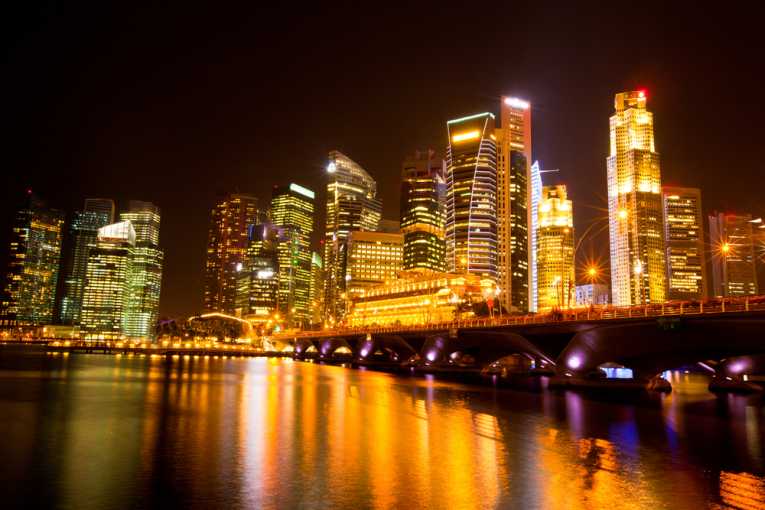When the gas-lighter carried out his rounds, there must have been street urchins attracted to the novel brightness and the opportunities that provided. Now we have a spread of incredible, high-pressure sodium brightness around the planet, virtually bringing day to night in a major area of terrestrial habitats.
As has been said before, light pollution could be just as severe as any, given its immense significance to living organisms, their physiology, behaviour, reproduction and predator - prey interactions. Discounting the ancient moths to flame (and UV light traps) studies used by entomologists from time immemorial, ground dwellers were targeted.
Their activities have been studied too, but population studies carried out by Messrs. Davies, Bennie and Gaston at Exeter University reveal more about whole ecosystems. Their research has been published in the Royal Society journal Biology Letters.

Credit Kevin Murphy
Above Image: The lights of the giant natural harbour at Falmouth (the third largest in the world) have delighted returning sailors for more than a thousand years, but research in Cornwall points the finger at ecological problems as those spectra become more effective.
Five major animal groups (see graph below) were found contributing much more to the predator and
scavenger communities beneath lit areas. 1194 animals from 60 groups were collected in the pitfall traps in Cornwall, UK. While the composition of plant communities in the habitat did not vary at all significantly, the animals did!

One of the major predator species at the location was Carabus violaceus. These beetles may be pretty (or maybe not!) but they can locate and destroy a lot of their prey with those big black eyes in those bright lights - Carabus violaceus; Credit: © Shutterstock
There has been an annual six per cent increase in street lighting worldwide recently but the authors believe metal halide or light-emitting diodes may further exacerbate any effects which artificial lighting has on the environment because these technologies emit light over a broader range of wavelengths. Such wavelengths would affect more animals and perhaps even the composition of the plants in the community.

Credit: Biology Letters
Above Graph: Graphs showing (varying) number of individuals on the Y axis with day/night on the x axis, illustrating the effect of high-pressure sodium street lighting on the abundance of individuals within trophic groups of invertebrates. Bars represent the average total number of individuals in each group collected from pitfall traps deployed under street lights (open bars) and between street lights (grey bars). Error bars represent standard error.
This graph is carefully drawn to show how invertebrate groups are affected. While individual species may be missing at any particular season or time, the assemblage of feeding types remains a suitable grouping for the purposes of investigating such a community. The effects on the ecosystem can now be estimated precisely because the small animals on which any large predators will feed are fully investigated here.
These invertebrates predate each other, but they are only a mouthful to the birds, mammals and one or two amphibians, and snakes (given the fairly restrictive Cornish climate and its fauna). Perhaps those Victorian street urchins around the gas lights were equally subject to exploitation, as Dickens has described to us in such precise detail (Ahh, Oliver!).










